Chile is a land of contrast. From the driest place on earth, the Atacama Desert, to its incredible 6500 km of coastline, it is a country worth visiting for those with an adventurous side. Chile’s climate replicates that of the Mediterranean, with warm summers and cooler nights. Benefitting from this climate and its long coastline are colonies of penguins, who live in both the cooler south and warmer north of the country.
Chile has five UNESCO World Heritage Sites including Rapa Nui National Park and the Churches of Chiloé. The Andes runs along Chile’s borders, creating some of the worlds largest active volcanos. Chile is home to over 1300 volcanos that tower over forests, deserts, lagoons and its metropolitan areas are bustling, colourful and lively. It’s easy to see why Chile is one of the best countries in South America to visit. Here are 20 of the most incredible natural, historical and famous landmarks in Chile to put on your list to see.
20 Famous Chile Landmarks
Natural Landmarks in Chile
1- Atacama Desert
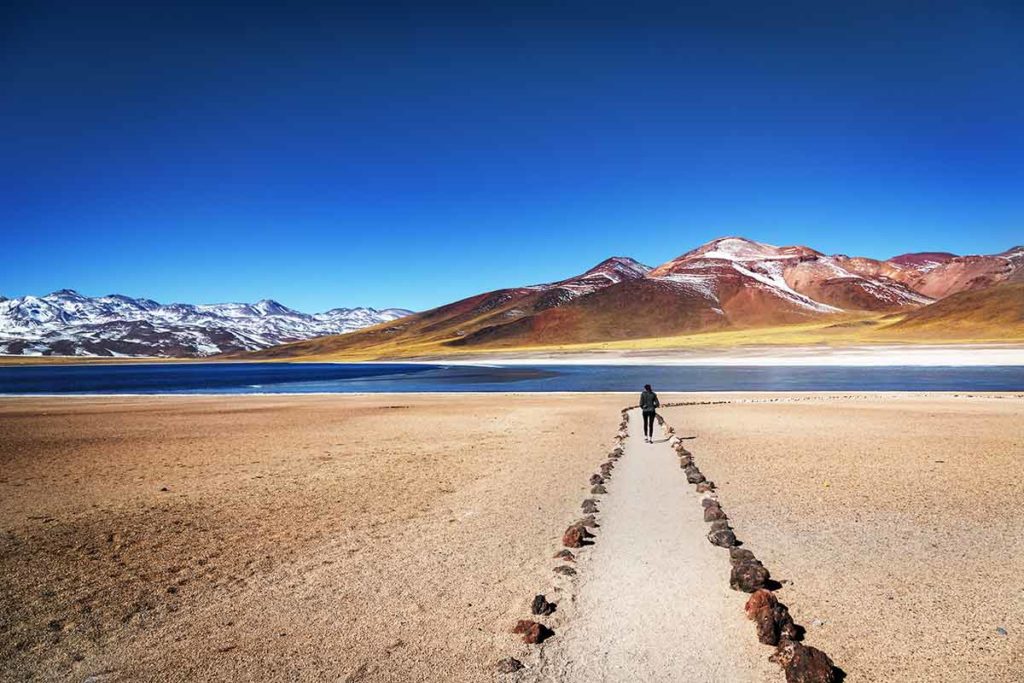
The Atacama desert is the driest place on earth, and receives less 1mm of rainfall each year, with some areas recording no rain at all.
The desert is one of the oldest on earth, with an elevation of 2255 m (7500 feet), making it a beautiful yet hostile environment.
The Atacama Desert is 1000 km long and covers 363,000 sq km between the Andes and the Pacific Ocean.
Despite its challenging natural environment, the Atacama Desert is home to around one million people in its fishing villages and mining towns.
Grey foxes and scorpions live in the drier central regions, while penguins and sea lions hang around its border with the Pacific Ocean.
When visiting the Atacama Desert, start at the small mining town of Calama.
2- Valle de la Luna
Valle de la Luna, or Moon Valley, is an incredible natural landmark in Chile.
The valley has stunning sandstone peaks with jagged edges and craters that create the effect similar to the moon’s rocky landscape.
Valle de la Luna is in the Atacama desert.
Within the valley are eerie natural monuments of stone, petrified salt and sand chiselled by erosion over time.
The hauntingly beautiful figures are known as ‘Las Tres Marias’.
While Valle de la Luna is a spectacular sight at any time of the day, visit at sunrise or sunset to see the sandstone turn from orange through to pinks and purples, adding to the majesty of the valley.
Valle de la Luna is 13 km west of San Pedro de Atacama.
3- Cueva del Milodon
The Cueva del Milodon, a national monument north of Puerto Natales, is filled with stories, legends and remains of the first humans on the South American continent.
The cave is vast at 200 m (650 ft) deep and 9 m (30 ft) high.
Centuries ago, people would seek shelter in the caves from unpredictable weather and attacks from animals.
Hermann Eberhard, a German pioneer, discovered the site in 1895.
Within the caves, archeologists discovered a well-preserved skin of a prehistoric Milodon, which gave the cave its name.
Cueva del Milodon is at Y-290 8, Natales, Magallanes y la Antártica Chilena.
4- Cochamó Valley
Cochamó Valley is a breathtaking sight.
The Patagonian mountain range steeply rises from either side of the Cochamó River, creating a vibrant rainforest eco-system.
The valley is entirely undisturbed and has retained its ancient trees, including 3000-year-old alerce trees.
A meadow next to the river is a favoured camping ground for hikers and nature lovers taking a break to absorb the area’s beauty.
Within the valley hiking, swimming and climbing are popular activities.
The best way to access the valley is by starting at Camping La Junta, the peaceful camping meadow beside the river.
Cochamó Valley and Camping La Junta is at Calle Sin Nombre Sin Numero, Cochamo, Los Lagos.
5- El Tatio
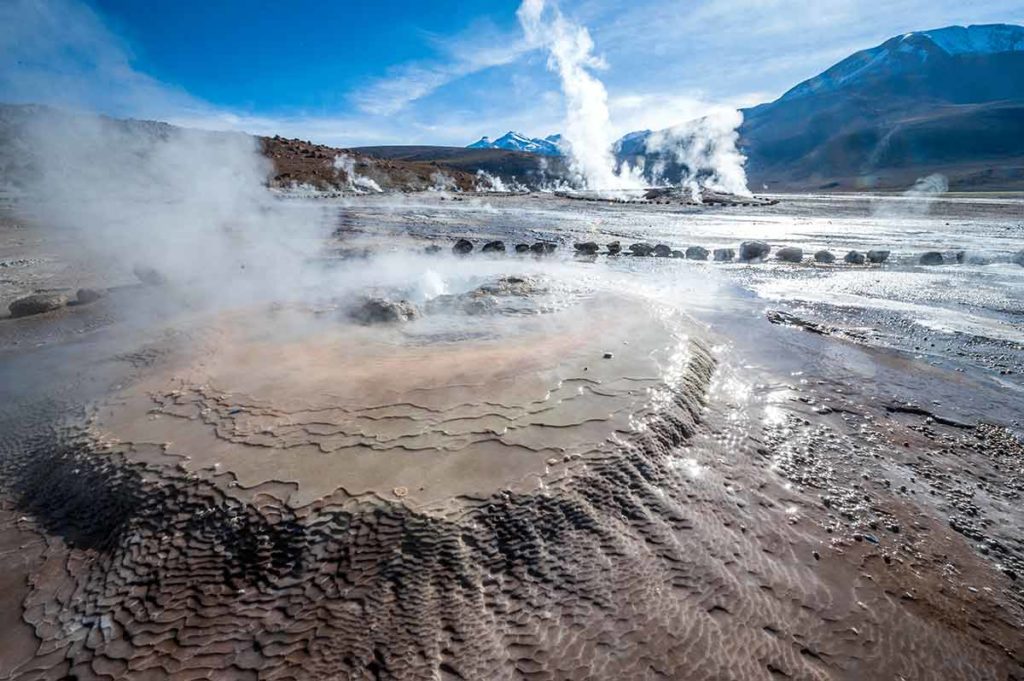
El Tatio is home to the Southern Hemisphere’s largest geyser field with more than 60 geysers that shoot out hot water and steam each morning.
The geyser field is located close to the Bolivian border in the mountain ranges.
The geysers sit at 4300m (14,173 ft) above sea level, making for a rewarding sight after a long climb.
Surrounding the geysers are stratovolcanoes.
El Tatio covers 12 sqm of geysers, mud pools, hot springs and mud volcanoes.
The geyser field has been used as a site for environmentalists and scientists to study life on early earth, and the potential life on Mars due to its geothermal nature.
El Tatio is at B-245, Camparmento Geotermico, Corfo.
6- Ventisquero Colgante Falls
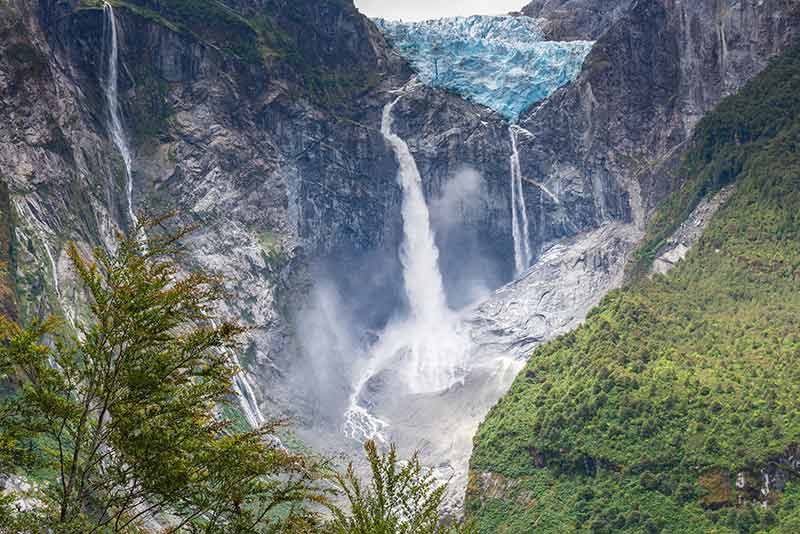
Ventisquero Colgante Falls are a relatively new group of waterfalls created by the melting of glaciers.
As the Ventisquero Colgante hanging glacier melts, the meltwaters have formed a steady stream of water, creating the falls.
The two towering waterfalls drop 600 m onto the bedrock below and into an avalanche cone, forming together in a small lake named Laguna Témpanos.
Captain Enrique Simpson discovered the falls in 1875 and could see them from his moored boat.
Thee Captain wrote that the glacier was 100 m from the banks of the river.
If this observation was correct, the glacier has shrunk by 8 km and continues to do so due to global warming.
Ventisquero Colgante Falls is at Queulat National Park, Cisnes, Aysén.
Discover more Famous World Landmarks:
- 25 Australian Landmarks
- 20 New Zealand Landmarks
- 20 African Landmarks
- 21 Egyptian Landmarks
- 20 Jordan Landmarks
- 10 Tasmanian Landmarks
- 20 Antarctica Landmarks
7- Osorno Volcano
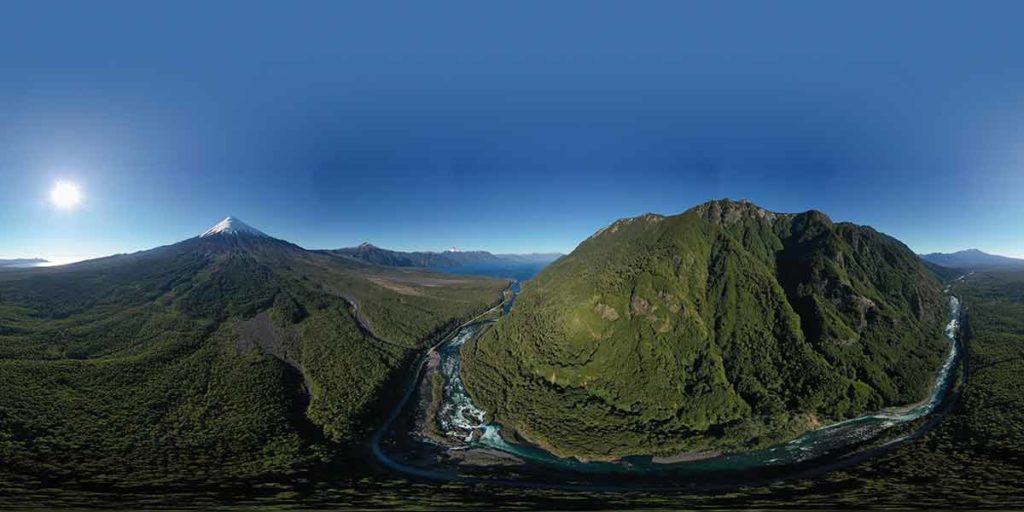
Osorno Volcano is a 2600 m (8701 ft) conical stratovolcano in Los Lagos covered by a glacier.
Osorno was historically a highly active volcano and has produced lava flows following eruptions.
Charles Darwin saw the volcano erupting in January 1835, but the volcano is now dormant, having last erupted in 1869.
Many people compare Osorno Volcano to Mount Fuji in Japan due to their similarly perfect slopes and snowcapped peaks.
The best views of the mountain are from a Cruce Andino ferry, however, during the southern hemispheres summer, climbing is also available for those wanting a closer look.
Osorno Volcano is at Ruta V-555 Vicente Perez Rosales National Park, Puerto Montt.
8- Piedra de la Iglesia
Resembling a giant boulder emerging from the South Pacific Ocean’s waters, Piedra de la Iglesia is a rock formation featuring a natural arch.
The rock is home to many native birds.
Piedra de la Iglesia, or Church of Stone in English, is the most prominent of nine other rock formations within the area.
The rock is made of white and grey stone and is just off the shoreline, making it accessible by foot during low tide.
The beach bordering the Church of Stone is made from black volcanic rock.
Piedra de la Iglesia is at Constitución, Maule.
9- Torres del Paine
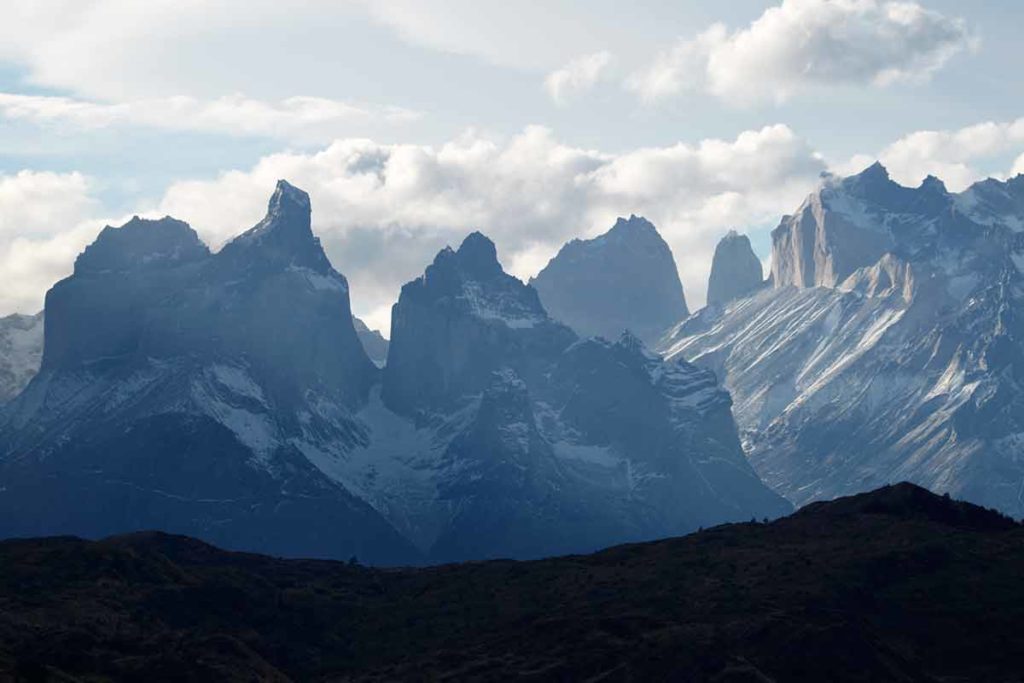
The Torres del Paine are the three most beautiful peaks in Chile and hiking these mountains is one of the most popular things to do in Patagonia.
The mountains are made from granite and spike up out of the surrounding rolling hills, towering above a blue lagoon.
The peaks reach 2133 m (7000 ft) and are covered in snow year-round.
Torres del Paine is a popular destination for hikers who want to hike through the snowfields or climb parts of the glacier.
The lagoon below is filled with the meltwater from the glacier, giving it its mesmerising blue hue.
Torres del Paine is at Magallanes and Chilean Antarctica.
10- Isla Magdalena
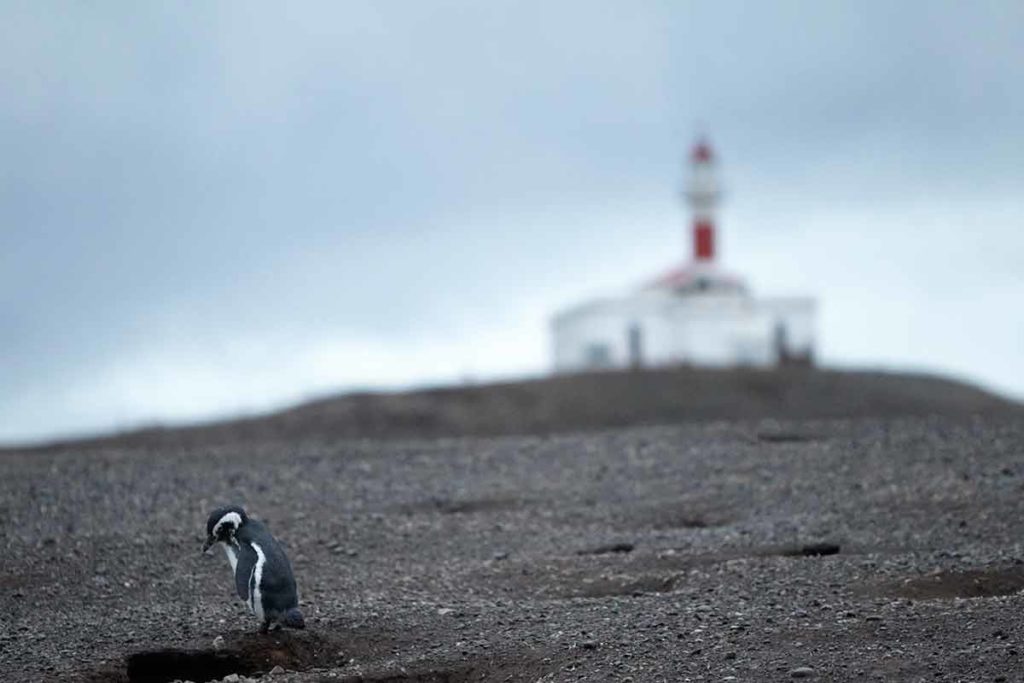
Isla Magdalena has the most important penguin colony in Chile.
The island is home to Magellanic penguins, endemic to South America. The island itself is tiny at just 1 kilometre squared in size.
The colony is one of Patagonia’s best rookeries, offering the penguins much-needed shelter and security.
The island was declared a national monument to protect the breeding ground of almost 120,000 nesting penguins.
It is possible to visit the island and view the penguins up close thanks to a path that meanders between the penguin’s burrows.
The penguins have been closely monitored since 1998.
The aim is to track the penguin population and observe the impact of tourism on the birds.
Isla Magdalena is in the Strait of Magellan, a two-hour boat ride from Punta Arenas and a popular stop on an Patagonia cruise.
11- Laguna San Rafael
Laguna San Rafael is a lagoon created from the meltwaters of the San Rafael Glacier.
Sadly, the San Rafael glacier is retreating rapidly, and scientists believe the glacier will have entirely melted by 2030.
One of the best ways to experience the lagoon and the glacier is from a catamaran.
The lagoon is filled with icebergs which regularly fall from the glacier, creating significant waves in the waters below.
Laguna San Rafael is at Aysén.
Also read:
- 20 USA Landmarks
- 23 Canada Landmarks
- 22 Ohio Landmarks
- 21 Arizona Landmarks
- 21 Minnesota Landmarks
- 21 Oregon Landmarks
- 21 Illinois Landmarks
- 21 Colorado Landmarks
- 21 Georgia Landmarks
- 21 Michigan Landmarks
- 23 Los Angeles Landmarks
- 21 Washington Landmarks
- 21 Maryland Landmarks
- 20 Manitoba Landmarks
- 20 Kansas Landmarks
- 21 New Mexico Landmarks
- 20 Idaho Landmarks
- 20 Montana Landmarks
- 20 Oklahoma Landmarks
- 21 Wisconsin Landmarks
- 20 Tennessee Landmarks
- 21 Iowa Landmarks
- 20 Alaska Landmarks
- 20 Miami Landmarks
- 21 West Virginia Landmarks
- 21 Kentucky Landmarks
- 20 Louisiana Landmarks
- 21 Arkansas Landmarks
- 20 Cincinnati Landmarks
- 20 San Antonio Landmarks
- 25 Indiana Landmarks
- 21 New York Landmarks
- 20 Texas Landmarks
- 21 Boston Landmarks
- 20 Florida Landmarks
- 20 Hawaii Landmarks
- 5 South Dakota Landmarks
- 21 Pennsylvania Landmarks
- 23 New Jersey Landmarks
- 21 Virginia Landmarks
- 21 North Carolina Landmarks
- 21 Utah Landmarks
- 21 Nevada Landmarks
- 20 Massachusetts Landmarks
- 20 Washington DC Landmarks
- 20 Vermont Landmarks
- 20 Nebraska Landmarks
- 20 North Dakota Landmarks
- 21 Missouri Landmarks
- 20 Rhode Island Landmarks
- 21 Maine Landmarks
- 21 Connecticut Landmarks
- 20 San Diego Landmarks
- 20 Landmarks In South Carolina
- 20 Mississippi Landmarks
- 20 Las Vegas Landmarks
- 20 Dallas Landmarks
- 20 Houston Landmarks
- 20 Seattle Landmarks
Historical Landmarks
12- The Humberstone and Santa Laura Saltpeter Works
The Humberstone and Santa Laura Saltpeter Works are in the desert of Pampa, one of the driest deserts on earth.
The two sites became a UNESCO World Heritage Site in 2005.
Pampa sits atop the largest deposit of saltpetre in the world.
The works were established in 1872 and with them came bustling towns built for the workers and their families.
In 1960 the works were abandoned and the area became a ghost town.
Now, the sites are open to tourists to explore the saltworks and discover more about the area’s pampinos culture.
The Humberstone and Santa Laura Saltpeter Works is at Iquique Province, Tarapacá region.
13- Chiza Geoglyphs
Geoglyphs are a familiar sight in many South American countries, and Chile is no different.
The Atacama Desert is home to many ancient Incan geoglyphs including a herd of llama, the Atacama Giant and the Chiza geoglyphs.
The Chiza Geoglyphs feature hill figures of people made from a series of geometric shapes.
The geoglyphs are around 1000 years old.
Unusually, the Chiza geoglyphs are marked on hillsides and visible from both land and the sky.
Many other geoglyphs are only fully visible from the sky.
The geoglyphs were made by arranging dark stones on top of lighter sand.
Chiza Geoglyphs is at Chiza.
14- Cerro El Plomo High Shrine
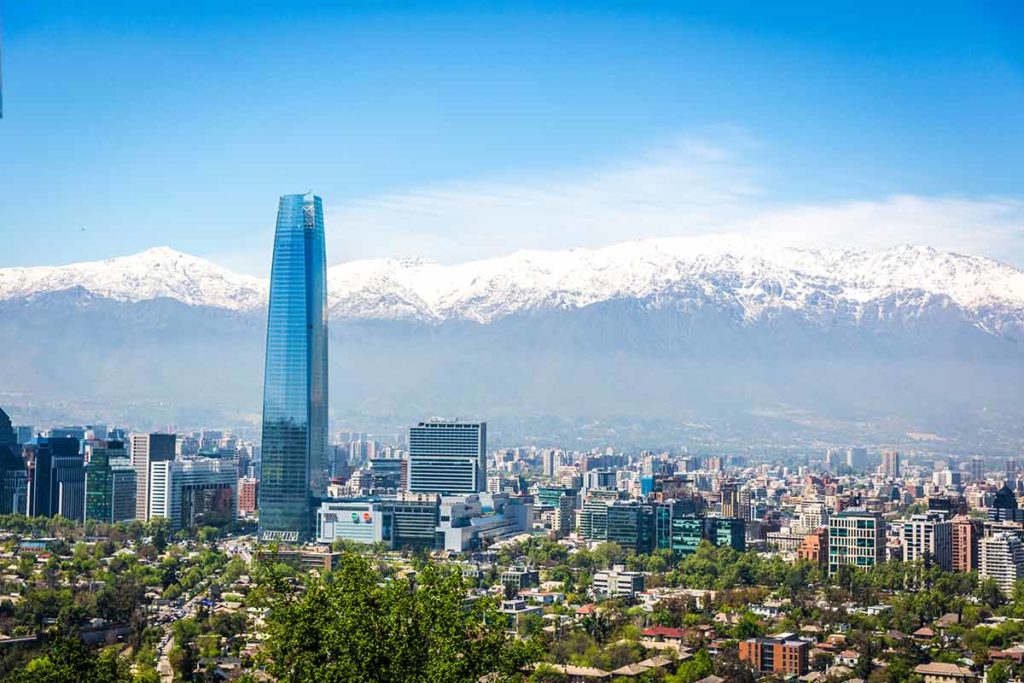
Cerro El Plomo is a mountain within the Andes range.
During the 1950s, an archeologist discovered the frozen body of a child who was around eight years old and believed to have been sacrificed by the Incas at the top of the mountain.
The discovery remains one of the most important in Incan history.
The frozen child was found in an Incan shrine after archeologists followed a pathway up the mountain discovered during the previous century.
The shrine and other incredible Incan archeological finds were discovered on Cerro El Plomo.
The shrine sits at 5200 m above sea level and consists of a worshipping place and 200 m further up the mountain, a burial ground.
Cerro El Plomo High Shrine is at Cerro El Plomo, near Santiago.
15- Pukara de Punta Brava
Pukara de Punta Brava is a fortified construction built to protect a village made from stones quarried in the local area.
Pukara’s are traditional Andean buildings dotted across Chile.
Pukara de Punta Brava is an important element of an archeological site where cave paintings and pre-Inca mining facilities have also been discovered.
Pukara de Punta Brava was made a National Monument in 1982.
Pukara de Punta Brava is at Atacama, Copiapo, Tierra Amarilla.
16- La Moneda Palace
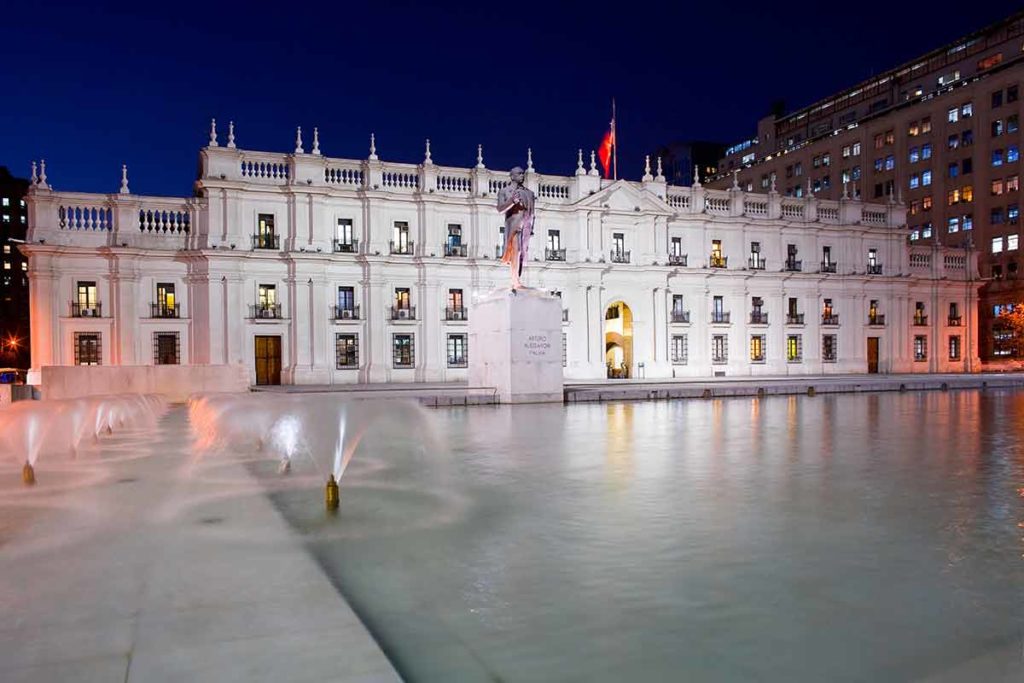
La Moneda Palace is the seat of the President of the Republic of Chile.
Italian architect Joaquin Toesca designed the building in 1784 as a mint house for Chile.
It wasn’t until 1845 that the palace became the presidential residence, and the mint was moved to another location.
Much of the palace was heavily damaged during the military coup d’etat in 1973.
But by 1981 the reconstruction work was complete, save for a few bullet holes, to mark as a reminder for the buildings’ history.
La Moneda Palace is at Moneda S/N, Santiago.
17- Malleco Viaduct
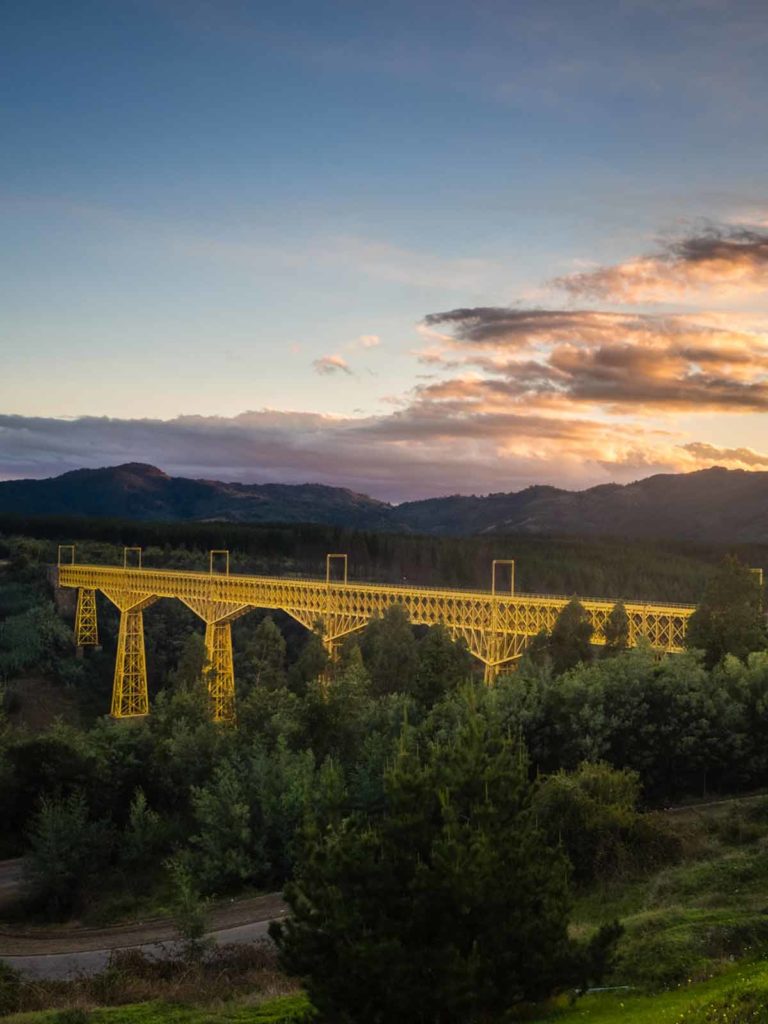
Malleco Viaduct is a railway bridge crossing the Malleco River valley.
President Jose Manuel Balmaceda opened the viaduct in 1890, making it the highest bridge in the world at the time.
Aurelio Lastarria designed the bridge, which was declared a National Monument in 1990.
Construction of the viaduct was a significant engineering challenge due to the nature of the landscape it was built to cross.
The bridge is 347.5 m long and built in five separate parts before being assembled using hydraulic systems that (at the time) were groundbreaking.
Today, the bridge can be appreciated for its engineering prowess from the Pan-American Highway which runs parallel.
Malleco Viaduct is at R-336, Collipulli, Araucanía.
18- Temuco Railroad Depot
Another of Chile’s many UNESCO World Heritage Sites is Temuco Railroad Depot.
Temuco Railroad Depot was designed in a round Art Deco style and is the home to many steam locomotives from throughout Chile’s railroad history.
It is one of the best historical railway museums in the world.
The depot began its life as a stopping point where long-distance trains could change locomotives.
Over the years it became an essential repairs centre and a safe place to house locomotives when not in use.
Temuco Railroad Depot is at Temuco Railroad Station, Temuco.
19- Parinacota Church
Parinacota Church was built in the 17th century and is a must-visit historical landmark in Chile.
The church is not made from what many would consider traditional building materials, it is constructed from mud, salt and para brava, a type of wild straw.
The church is a typical example of Spanish architecture and features many arches and coronas.
Parinacota Church is filled with statues of saints, mirroring the common style of churches in Spain at the time.
The church sits at an elevation of 4400 m high and is in the Lauca National Park.
Parinacota Church is at A-93, Parinacota, Putre, Arica y Parinacota.
20- Castro Cathedral
Iglesia San Francisco de Castro, or Castro Cathedral, is a UNESCO World Heritage Site and a famous landmark in Chile.
Eduardo Provasoli, an Italian architect, designed the church in the Neo-Gothic style, and the building was completed in 1912.
The church’s facade is a bright striking yellow and is adorned by ruby and violet accents.
Castro Cathedral is famous for its intricate interior carvings, arches and traditional Chiloe design.
Castro Cathedral is at Castro, Chile Island.
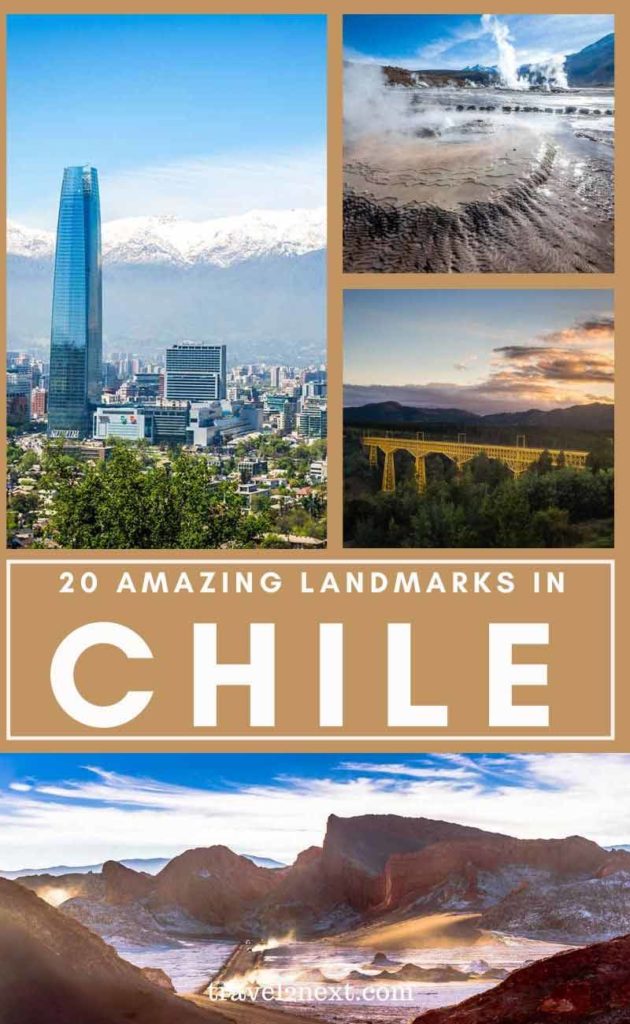
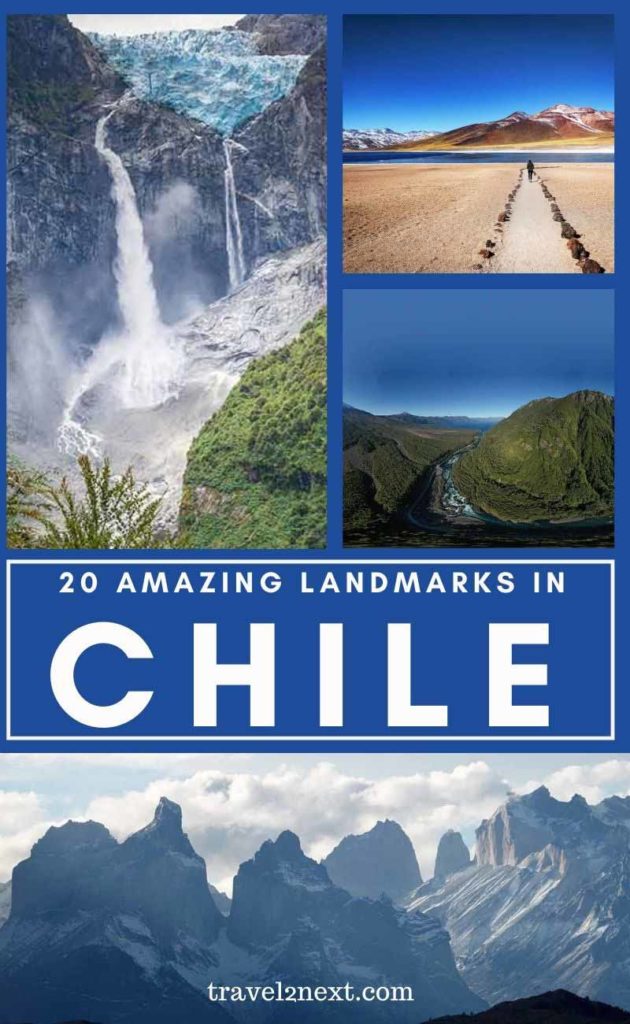
Plan Your Trip

Rent A Car – Find the best car rental rates at Discover Cars. They compare car hire companies to provide you with the best deal right now.

Find A Hotel – If you’re curious about this article and are looking for somewhere to stay, take a look at these amazing hotels.

